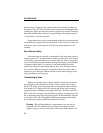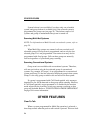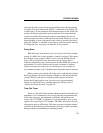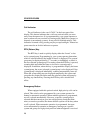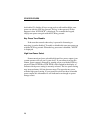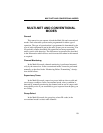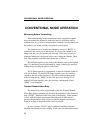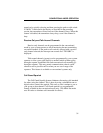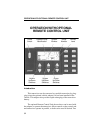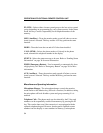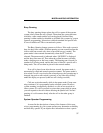
CONVENTIONAL MODE OPERATION
30
CONVENTIONAL MODE OPERATION
Monitoring Before Transmitting
Before transmitting in the conventional mode, regulations require
that you monitor the channel to make sure that it is not being used by
someone else. If you were to transmit while someone else was talking on
the channel, you would probably disrupt their conversation.
The simplest way to monitor the channel is to note if “BUSY” is
indicated in the lower part of the display. If it is not, the channel is not
being used and you can transmit your message. There may be periods
when this indication is displayed and no one is using the channel. There-
fore, other methods to monitor the channel are as follows:
If Call Guard squelch is not used on the channel (refer to description
page 31), monitoring can be performed by simply listening for someone
talking before pressing the push-to-talk switch.
If Call Guard squelch is programmed, it must be disabled so that all
calls can be heard. To disable Call Guard squelch, press the Auxiliary
switch on the side of the transceiver. This turns on the monitor mode
which is indicated by “MON” in the lower part of the display. To re-
enable Call Guard squelch, press the Auxiliary switch again so that
“MON” is not displayed.
Transmit Disable When Busy
The transceiver can be programmed so that the Transmit Disable
When Busy feature automatically disables the transmitter if the channel is
busy (“BUSY” indicated in the lower part of the display). If the channel
is busy with this feature programmed and the push-to-talk switch is
pressed, the transmitter does not turn on and the channel can be moni-
tored for as long as the push-to-talk switch is pressed.
In some systems, “BUSY” may be indicated and the transmitter
disabled even though no one is talking. In this case, the transmitter can be



